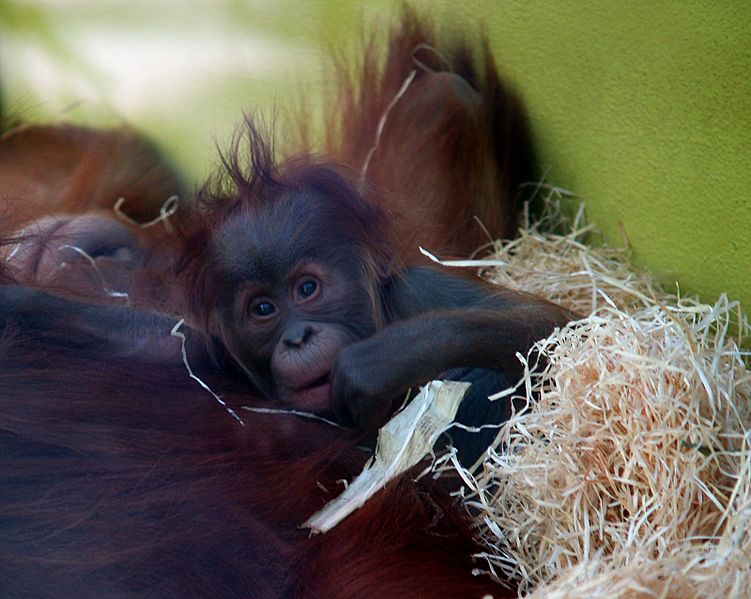Reproduction
Orangutans have a reproductive cycle that is similar to Humans. A female Orangutan's reproductive stage lasts roughly nine months, which is similar to the duration of a human female's reproductive stage. Female Orangutans are also similar to human females because they both do not show external signs of Estrus or Menstruation and their reproductive cycles last roughly 30 days. A female Orangutan will normally give birth to only one offspring at a time and this occurs every 6 to 7 years. They will be within constant contact of their offspring for the first year of life and stay within contact of their young for its first 7 years of life. The reproductive process for female Orangutans is very costly since feeding herself is already a daunting task without having to take care of the metabolic needs of an infant.
| Juvenile Orangutans are 1.5 to 2 kg at birth and remain under 25 kg for the first 6 to 7 years of their lives. Orangutan young have the longest immaturity of all apes lasting 9 to 12 years and consisting of three stages of development: infant, juvenile, and adolescence. A female Orangutan reaches adulthood upon the birth of her first infant, around the age of 14 old 16 years old. Some females have given birth as early as age 7 in captivity and some males have fathered an offspring as early as age 6.5 in captivity (2). A male Orangutan reaches adulthood when his laryngeal throat pouch, cheek pads, and long call all emerge which is usually around the age of 18 to 20 years old. Males show an unusual two stage maturation with a sub-adulthood stage beginning around 10 years old and lasting to the age of 15, sometimes as late as age 19 or 20 (5). |
 |
Orangutans reproduce so slowly it results in fierce competition for males to find females. The main consequence of this life cycle is that it can take decades to replace population losses of Orangutans. Also, females are selective in the mating process. They will seek out desirable males and turn away males they do not want to mate with. This process can lead to forced copulations that are often referred to as "rape". Sub-adult males will often try to mate with adult females until a larger adult male will come along and displace the competing smaller males. Some biologists argue that this process has led to the Sexual Dimorphism seen in Orangutan species.
